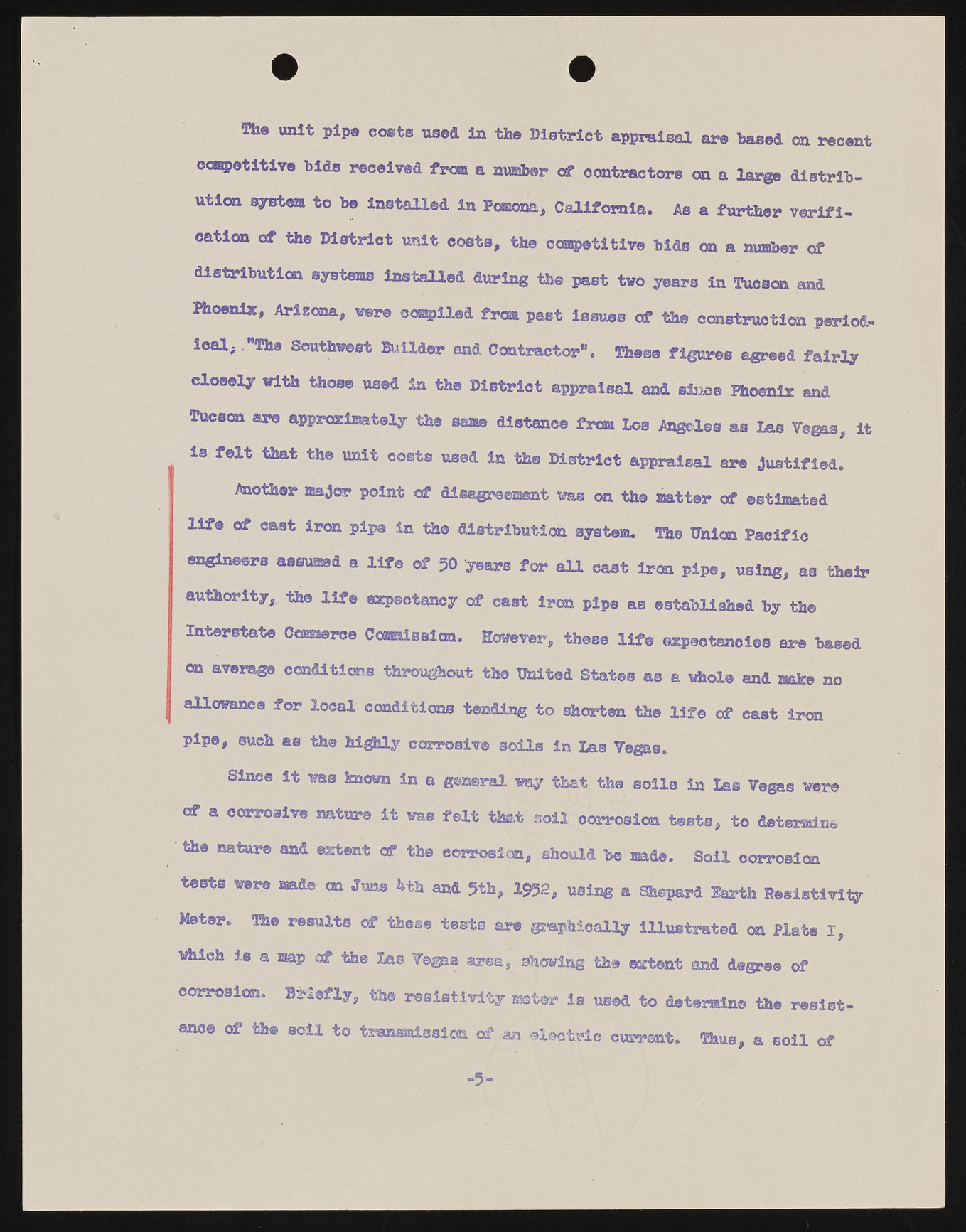Copyright & Fair-use Agreement
UNLV Special Collections provides copies of materials to facilitate private study, scholarship, or research. Material not in the public domain may be used according to fair use of copyrighted materials as defined by copyright law. Please cite us.
Please note that UNLV may not own the copyright to these materials and cannot provide permission to publish or distribute materials when UNLV is not the copyright holder. The user is solely responsible for determining the copyright status of materials and obtaining permission to use material from the copyright holder and for determining whether any permissions relating to any other rights are necessary for the intended use, and for obtaining all required permissions beyond that allowed by fair use.
Read more about our reproduction and use policy.
I agree.Information
Digital ID
Permalink
More Info
Rights
Digital Provenance
Publisher
Transcription
The unit pipe costs used in the District appraisal are based on recent competitive bids received from a number of contractors on a large distribution system to be installed in Pomona, California. As a further verification of the District unit costs, the competitive bids cm a number of distribution systems installed during the past two years in Tucson and Phoenix, Arizona, were compiled from past issues of the construction periodical, "The Southwest Builder and Contractor". These figures agreed fairly closely with those used in the District appraisal and since Phoenix and Tucson are approximately the same distance from Los Angeles as Las Togas, it is felt that the unit costs used in the District appraisal are Justified. Another major point of disagreement was on the matter of estimated life of cast iron pipe in the distribution system. The Union Pacific engineers assumed a life of 50 years for all cast iron pipe, using, as their authority, the life expectancy of cast iron pipe as established by the Interstate Commerce Comaission. However, these life expectancies are based on average conditions throughout the United States as a whole and make no allowance for local conditions tending to shorten the life of cast iron pipe, such as the highly corrosive soils in Las Vegas. Since it was known in a general way that the soils in Las Tegas were of a corrosive nature it was felt that soil corrosion tests, to d e t e n t the nature and extent of the corrosion, should be made. Soil corrosion tests were made on June 4th and 5th, 1952, using a Shepard Earth Resistivity Meter. The results of these tests are graphically illustrated on Plat© I, which is a map of the Las Vegas area, shewing the extent and degree of corrosion. Briefly, the resistivity meter is used to determine the resistance of the soil to transmission of an electric current. Thus, a soil of

